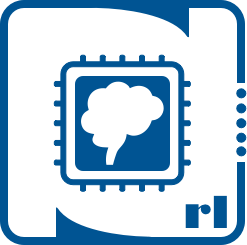Milad Mozafari, M. Ganjtabesh, A. Nowzari-Dalini, and T. Masquelier, SpykeTorch: Efficient Simulation of Convolutional Spiking Neural Networks With at Most One Spike per Neuron, Frontiers in Neuroscience, 2019, 13. [view]
Milad Mozafari, M. Ganjtabesh, A. Nowzari-Dalini, S. J. Thorpe, and T. Masquelier, Bio-inspired digit recognition using reward-modulated spike-timing-dependent plasticity in deep convolutional networks, Pattern Recognition, 2019, 94. [view]
- Mozafari, M., Kheradpisheh, S. R., Masquelier, T., Nowzari-Dalini, A., & Ganjtabesh, M. (2018). First-spike-based visual categorization using reward-modulated STDP. IEEE transactions on neural networks and learning systems, (29), 6178-6190. [view]
- Kheradpisheh, S. R., Ganjtabesh, M., Thorpe, S. J., & Masquelier, T. (2018). STDP-based spiking deep convolutional neural networks for object recognition. Neural Networks, 99, 56-67. [view]
- Ashtiani, M. N., Kheradpisheh, S. R., Masquelier, T., & Ganjtabesh, M. (2017). Object categorization in finer levels relies more on higher spatial frequencies and takes longer. Frontiers in psychology, 8, 1261. [view]
- Kheradpisheh, S. R., Ganjtabesh, M., & Masquelier, T. (2016). Bio-inspired unsupervised learning of visual features leads to robust invariant object recognition. Neurocomputing, 205, 382-392. [view]
- Kheradpisheh, S. R., Ghodrati, M., Ganjtabesh, M., & Masquelier, T. (2016). Deep networks can resemble human feed-forward vision in invariant object recognition. Scientific reports, 6, 32672. [view]
- Kheradpisheh, S. R., Ghodrati, M., Ganjtabesh, M., & Masquelier, T. (2016). Humans and deep networks largely agree on which kinds of variation make object recognition harder. Frontiers in computational neuroscience, 10, 92. [view]
- Kheradpisheh, S. R., Nowzari-Dalini, A., Ebrahimpour, R., & Ganjtabesh, M. (2014). An evidence-based combining classifier for brain signal analysis. PloS one, 9(1), e84341. [view]
